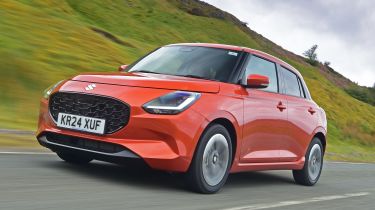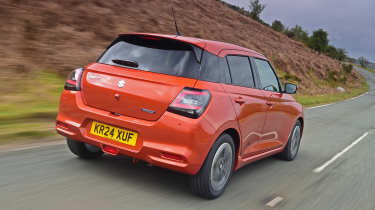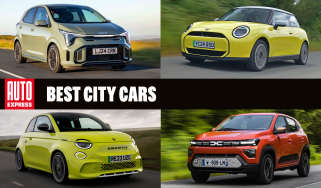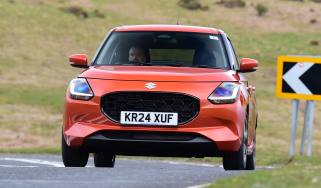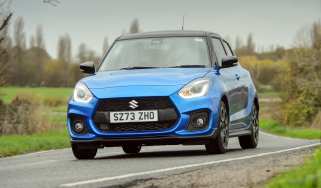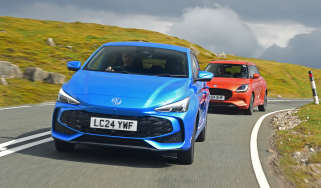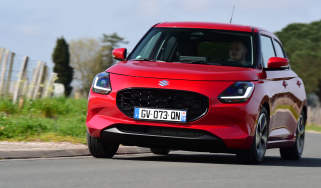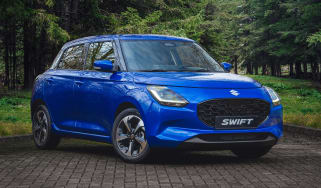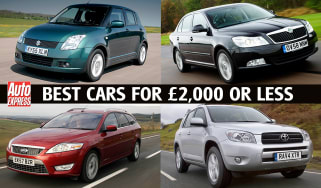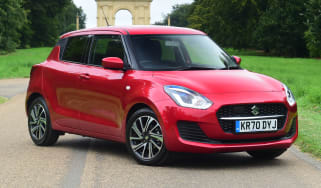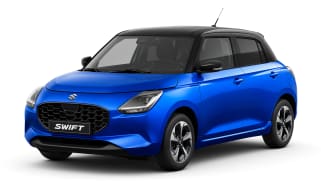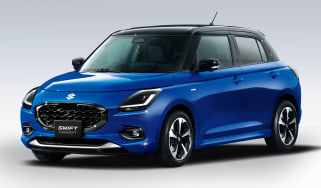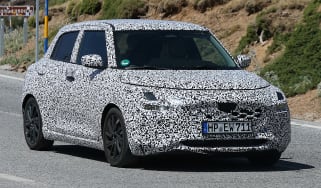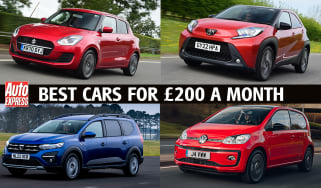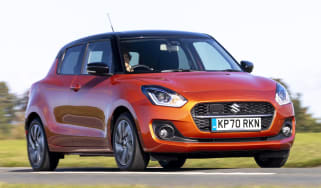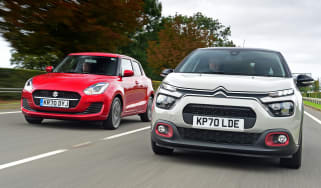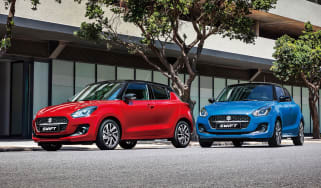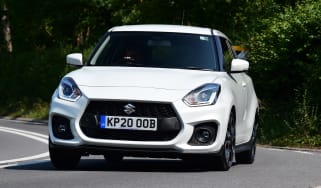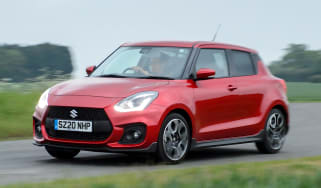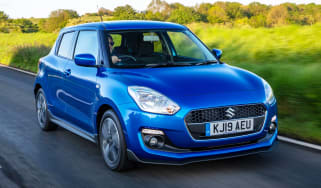Suzuki Swift review
The Suzuki Swift continues to offer plenty of value and efficiency in a dwindling supermini market
Quick verdict
The Suzuki Swift is a value champion in a slowly shrinking class. It feels built to a price in a way the MG3 doesn’t, but the trade-off is a lightweight construction that provides agile handling and rock-bottom fuel costs. The Swift won’t suit everyone, but if you’re not yet ready to go electric, this car provides an affordable, familiar and honest entry into the small-car market.
Our choice: 1.2 Motion
|
Key specs | |
|
Fuel type |
Petrol |
|
Body style |
Supermini |
|
Powertrain |
1.2-litre, 4cyl, petrol plus MHEV, front-wheel drive 1.2-litre, 4cyl, petrol plus MHEV, four-wheel drive |
|
Safety |
Three-star Euro NCAP (2024) |
|
Warranty |
3yrs/60,000 miles (up to 7yrs/100k miles with routine franchise dealer servicing) |
Suzuki Swift: price, specs and rivals
The supermini segment is dwindling. The Ford Fiesta is no more, and fewer manufacturers are finding reasons to invest funds in small cars – looking to more profitable SUVs (and electric cars) instead.
But instead of pulling the plug, Suzuki sees this as an opportunity. It estimates that of the 250,000 superminis sold annually in the UK, almost a third either won’t exist at all, or won’t have a like-for-like petrol replacement by 2028.
Hopes are high for the Suzuki Swift, then. There’s an expectation from the company that the Swift should thrive in a thinning market thanks to a long specification list, respectable efficiency from its mild-hybrid engine, a choice of manual or automatic gearboxes and even a four-wheel drive powertrain option.
All Swifts are powered by a 1.2-litre petrol engine with mild-hybrid electrical assistance, delivering 81bhp and 112Nm of torque. It comes with either a five-speed manual, or a CVT automatic transmission. The majority of the range is front-wheel drive, but the top-of-the-range Ultra trim can be had with ALLGRIP four-wheel drive.
More reviews
Car group tests
- Suzuki Swift vs MG3 2024 twin test: bargain small car battle
- Citroen C3 vs Suzuki Swift: 2021 group test review
In-depth reviews
Long-term tests
Road tests
Used car tests
Speaking of trims, there is a choice of two: entry-level Motion or Ultra. We reckon that Motion makes the most sense because despite being the least expensive version, it still comes stacked with the essentials (and more besides). For instance, there’s 16-inch alloy wheels, LED headlights, a nine-inch touchscreen infotainment system with sat-nav and full wireless smartphone connectivity, heated front seats, blind spot monitoring, rear cross-traffic alert, and adaptive cruise control. The pricier Ultra trim gets a few additional extras such as an automatic climate control system with a rear air vent, polished 16-inch alloys, electrically folding door mirrors, and seatbelt height adjusters.
Pricing for the Swift starts above the entry-level Renault Clio at a little over £18,500 in Motion trim. Upgrading to Ultra ups the price to a shade under £20,000, or roughly the same price as an entry-level Skoda Fabia. A CVT auto Swift starts at around £20,000, while the top-of-the-range Ultra equipped with ALLGRIP starts at a little over £21,000, or about what it’ll cost to get into a full hybrid Renault Clio E-Tech or an entry-level Volkswagen Polo.
Engines, performance & drive
There aren’t too many standard superminis that are genuinely fun to drive these days, so it’s nice to find that the latest Suzuki Swift provides a darty driving experience that rewards those unafraid to carry a bit of speed in the corners – something you may need to do given the modest performance its 1.2-litre engine has. However, the ruthless diet of the Swift means there isn’t the same degree of sound deadening you’ll find in more refined rivals, and it doesn’t have the most composed ride. Read more about the Suzuki Swift's engines, performance and drive…
MPG, emissions & running costs
The Suzuki Swift's lightness and the efficiency of its little mild-hybrid petrol engine means that it’ll sip fuel at a much slower rate than traditional petrol rivals, plus its residual values are respectable for the class. However, it’s likely to cost more than its main competitors to insure, which is disappointing with a car that’s supposed to be cheap to run. Read more about the Suzuki Swift's MPG, emissions and running costs…
Interior, design & technology
The design of the latest Suzuki Swift is a case of evolution rather than revolution, but it looks a little more substantial than before and comes with a bright array of colour schemes. Sadly, while the Swift's usability impresses with its clearly laid out controls and easy-to-read dials, the finish, with its cheap scratchy plastics, does not. The infotainment touchscreen also looks dated and isn’t as responsive as those in rivals. Read more about the Suzuki Swift's interior, design and technology…
Boot space, comfort & practicality
There is plenty of room up front in the Swift, and there are some reasonably useful storage areas. Some improvement wouldn’t go amiss in the back, where adults might find things a little cramped and uncomfortable on longer trips. The boot is tiny compared with the competition, and doesn’t feature the same useful practicality touches you get in the Swift’s top rivals. Read more about the Suzuki Swift's boot space, comfort and practicality…
Reliability & safety
Even though the Suzuki Swift comes with many collision avoidance safety features, it only received a disappointing three out of five star rating from safety experts Euro NCAP due to some concerns of potential knee and chest injuries in the frontal impact tests. We don’t know how the Swift will perform in our Driver Power customer satisfaction survey, but the brand as a whole still needs to work on improving in that department. Read more about the Suzuki Swift’s reliability and safety…
Should you buy a Suzuki Swift?
The Suzuki Swift will appeal to those who just want a small urban runabout that’s well-equipped and easy to park, and to those who feel small cars have become far too bloated. That lack of excessive mass does pay dividends on a B road, too, where the Swift will earn the respect of those who value something that’s fun to drive.
Unfortunately, it’s too noisy inside to be a very good road trip car, so anyone looking for a premium-feeling small car will have to head towards an Audi A1 or Volkswagen Polo. Company car drivers looking for the lowest tax bill should gravitate towards electric alternatives, while those looking for a small car with the practicality for family duties should consider the Skoda Fabia. Then there’s our favourite small car, the Renault Clio, which sort of does everything you could ask of a small car, yet has lower insurance costs than the Swift, and, in some trims, actually costs less than a Swift.
Frequently Asked Questions
If fuel efficiency, darty handling and a long equipment list are what you’re after in a supermini, then the Suzuki Swift will fit the bill. However, there are much more practical, refined, and nicely finished small cars out there.
